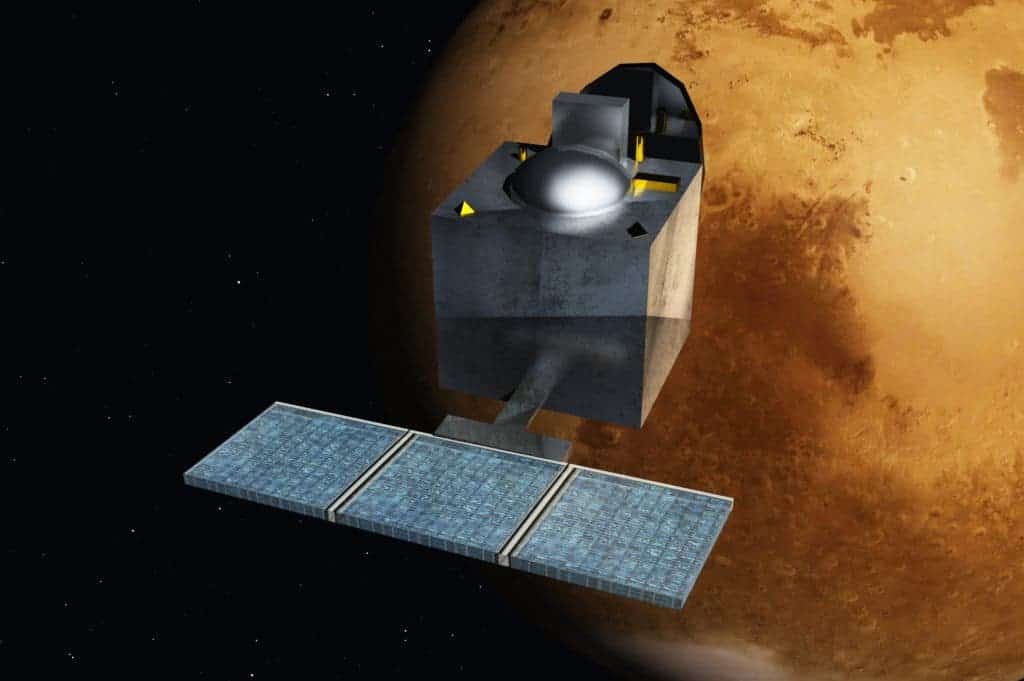India’s Mars Orbiter Mission or MOM, for short, is gearing up to enter Mars‘ orbit this Wednesday, after the dormant main engine on the spacecraft was test-fired flawlessly on Monday. If the maneuver proves successful, then India will join an exclusive list of countries who have deployed Mars explorers, like the US, Russia, Japan and Europe.
India’s maiden voyage to Mars

Nerves are tensed inside the Indian Space and Research Organisation’s mission control, as engineeres prepare for MOM’s most crucial moments yet. The orbiter was launched in November last year and has so far traveled 666 million kilometres (413 million miles). Now, it has reached the end of its epic journey. In just a couple of hours, Indian engineers will begin the orbiter’s final maneuver by firing the 440 Newton Liquid Apogee Motor (LAM) along with eight smaller liquid engines for about 24 minutes. The operation should slow down the craft from 22.1 km per second to 4.4 km per secon, or enough to become captured in Martian orbit.
The LAM had stayed dormant for roughly 300 days, but on Monday engineers fired the engine for a “perfect burn for four seconds as programmed”. Besides testing, the short engine burst also served to correct the craft’s trajectory, which is now perfectly synched.
Once in orbit, the MOM will be tasked with studying the Martian atmosphere and weather patterns. Most importantly, it is specially equipped to detect methane, which is a byproduct of life processes. Detecting methane would suggest there may still be life on Mars.
[RELATED] Curiosity finds no methane on Mars
There are currently three other spacecraft orbiting Mars, two American and one European. One of these is NASA’s MAVEN mission – a spacecraft that will soon start probing Mars’ upper atmosphere to look for clues that might explain how the once water-abundant planet turned into a cold and barren one over the past few billion years. This information might eventually help scientists terraform Mars in the next century. Also, having a better understanding of Mars’ weather will help NASA a lot to prepare for its slated manned mission from 2030 onward.
Back on MOM, though. If the mission proves successful, India will definitely be joining an elite group. Of the 41 missions to Mars so far, only 18 were successful. Thus, given than more than half of the missions so far have failed, including some performed by space agencies with a long tradition, history would seem to bet against India. From what we’ve gathered so far, though this won’t nearly be the case. I have faith that MOM will safely become deployed and once with it, India will have a strong message to boast. They’d be more than entitled to do so considering the whole mission only cost $75m, compared to $671m for NASA’s Maven or Russia’s Phobos-Grunt probe which cost $170m and never even made it past Earth’s orbit!






